International Journal of Scientific & Engineering Research, Volume 4, Issue ŗŖ, ber-2013
ISSN 2229-5518
1511
Analysis of effect of noise removal filters on noisy remote sensing images
Narayan P. Bhosale, Ramesh R. Manza
—————————— ——————————
Reducing noise from the satellite image is a challenge for the researchers in digital image processing. Several approaches are there for noise reduction. Generally speckle noise is commonly found in synthetic aperture radar images, satellite images and medical images etc [1], [3], [8], [9]. To give considerations and suggestions that is relevant for the development of methods for the detection, reduction. To creating a link to fields direct importance to the image analysis community. This can help people to understand better the context in which the remote sensing image analysis takes place [10], [11]. Digital image processing is the most important technique used in remote sensing. It has helped in the access to technical data in digital and multi-wavelength, services of computers in terms of speed of processing the data and the possibilities of big storage [12]. Several studies can also take the benefit of it such as technical diversity of the digital image processing, replication sites and maintaining the accuracy of the original data. Remote sensing is used to obtain information about a target or an area or a phenomenon through the analysis of certain information which is obtained by the remote sensor [13], [14]. It does not touch these objects to verify. Images obtained by satellites are useful in many environmental applications such as tracking of earth resources, geographical mapping, prediction of agricultural crops, urban growth, weather, flood and fire control etc.
This is an original RS image has used for the testing of results with different filters for denoising RS Images as shown in fig-
————————————————
![]() Ramesh Manza is currently working as Assistant Professor in Dept. of
Ramesh Manza is currently working as Assistant Professor in Dept. of
The research paper published by IJSER journal is about Analysis of effect of noise removal filters on noisy remote sensing images & IT, Dr. Babasaheb Ambedkar Marathwada University,
Aurangabad India,
1. It has taken on dated 12-Oct-2012, time 01:37.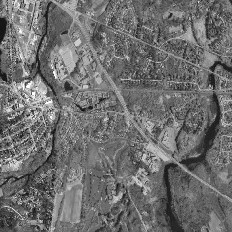
Fig.1.Original image: Concordorthophoto [20-21]. Each pixel having own location and gray level values [1], [20].
Gaussian and salt & Pepper are called impulsive noise. This
RS image which holding huge noise at pel or pixel level as shown in Fig-2 Gaussian noise RS image and Fig-3 Salt and Pepper Noise.
Images taken with both digital cameras and conventional film cameras or Satellite sensor will pick up noise from a variety of sources. Many further uses of these images require that the noise will be (partially) removed [15], [17].![]()
The sources of noise in digital images arise during image acquisition [1],[3],[11]. The performance of imaging sensors are affected by a variety of factors during acquisition, such as
Environmental conditions during the acquisition Light levels (low light conditions require high gain amplification).
![]() Sensor temperature (higher temp implies more
Sensor temperature (higher temp implies more
amplification noise) Depending on the specific noise
source.
There are different types of noises but we are concentrating below noises through this experimentation.
IJSER © 2013 http://www.ijser.org
International Journal of Scientific & Engineering Research, Volume 4, Issue ŗŖǰȱ Ȭ2013
ISSN 2229-5518
1512
A. Gaussian noise
B. Salt-and-pepper noise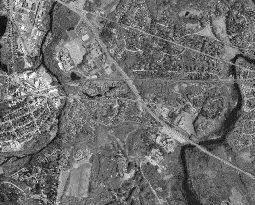
Fig.2.Gaussian noise added Image
Fig.3. Salt and Pepper Noise added Image
A. Gaussian Noise
Gaussian noise is a noise that has its PDF equal to that of the
normal distribution, which is also known as the Gaussian distribution [2], [3], 10]. Gaussian noise is most commonly known as additive white Gaussian noise. Gaussian noise is properly defined as the noise with a Gaussian amplitude distribution. As the name indicates, this type of noise has a Gaussian
distribution, which has a bell shaped probability distribution
function given by,![]()
….. (1)
Where g represents the gray level, m is the mean or average of the function and σ is the standard deviation of the noise in equation (1).
B. Salt-and-Pepper Noise
Salt and pepper noise is an impulse type of noise, which is
also referred to as intensity spikes. This is caused generally due to errors in data transmission. The probability of each is typically less than 0.1. The corrupted pixels are set alternatively to the minimum or to the maximum value, giving the image a “salt and pepper” like appearance. The salt and pepper noise is generally caused by malfunctioning of pixel elements in the camera sensors, faulty memory
locations, or timing errors in the digitization process [1], [2], [4], [7].
And other random occurrences of both black and white intensity values, and often caused by threshold of noise image. Salt and pepper noise is a noise seen on images. It represents itself as randomly occurring white and black dots. An effective filter for this type of noise involves the usage of a median filter. Salt and pepper noise creeps into images in situations where quick transients, such as faulty switching, take place [19], [20], [21].
Sora Parrolli and et al. [2012], has proposed a novel despeckling algorithm for (SAR) images based on the concepts of nonlocal filtering and wavelet-domain shrinkage., recently proposed for additive white Gaussian noise denoising, but modifies its major processing steps in order to take into account the peculiarities of SAR images.. Results on simulated speckled images are quite satisfactory with a consistent PSNR gain over the best reference algorithms to date. Another sore point is the lack of objective quality measure for SAR images which weakens all experimental analyses [1].
Elorjan Lusier and et al. [2011], has developed PURE LET
method to optimize a wide class of transform thresholding algorithms for denoising images corrupted by Gaussian noise [2].
D. Zhang and et al. [1997], has detected impulse noise and corrupted image from „Lena‟ (8bit/ pel). They have used Peak Signal to Noise Ratio (PSNR) method to remove noise. As per their view this works to provide fuzzy technique to avoid the influence of bad information in image [6].
Bin WANG and et al. [1999], has developed fusion technique
to remove clouds & shadow noise from Land Sat Thematic
Mapper(TM) images [7].
Zhang Xiangjun and et.al [2001], has proposed and studied space and frequency domain technique to remove stripe noise from “Hangtian Tsinghua-1” Satellite Image TS-1 [8].
Fuan Tsai and et al. [2008], used Fast Fourier Transfer (FFT) to
striping noise detection and designed strip detection algorithm and spine based interpolation scheme for correcting identified stripes in Landsat Multispectral Scanner (MSS), Thematic Mapper(TM) Hyperion Band 192 images [3]. Mr. Salem Sahel Al-amri and et al. [2010], worked on Saturn image and passed MF, AWF, GF, AMF filters to de-noise Salt and Paper Noise (SPN), Random variation Impulse Noise (RVIN) and Speckle noises. As a view they were arrived on Standard Median Filter (SMF) is good for filter for SPN with less than 40% density noise [10].
Raymond H. Chan, Chung-Wa Ho, and Mila Nikolova [2005], proposes a two-phase scheme for removing salt-and-pepper impulse noise. In the first phase, an adaptive median filter is used to identify pixels which are likely to be contaminated by noise (noise candidates). In terms of edge preservation and
IJSER © 2013 http://www.ijser.org
International Journal of Scientific & Engineering Research, Volume 4, Issue ŗŖǰȱ Ȭ2013
ISSN 2229-5518
1513
noise suppression, our restored images show a significant improvement compared to those restored by using just nonlinear filters or regularization methods only. Our scheme can remove salt-and-pepper-noise with a noise level as high as 90% [6].
In RS image denoising, performance assessment is quite a challenging task. We start with experiments carried out on RS image corrupted by simulated Gaussian and Salt and Pepper, obtaining objective performance which allow among different denoising algorithms. Then, we discuss experiments with Average Filter, Median Filter, UnSharp Filter and Wiener Filter and comparative result with RS images.
The performance is quantified by the peak signal-to-noise ratio (PSNR)
Images | PSNR | MSE |
Original | 17.3729 | 1.1906 |
Add Noise | 17.2959 | 1.2119 |
Average G_1 | 17.4364 | 1.1733 |
Median G_2 | 17.1348 | 1.2577 |
UnSharp G_3 | 16.7108 | 1.3867 |
Wiener G_4 | 17.3681 | 1.1919 |
GRAPH I has shown the denoising results of Gaussian Noise among various Filters.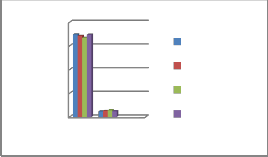
GRAPH I : THE VARITAION AMONG FILTERS FOR DENOISING RS IMGES
20.0000
![]()
……. (2)
is the maximum value admitted by the data format equation
(2) and (3) the mean-square error (MSE)
15.0000
10.0000
5.0000
0.0000
1 2 3
Average G_1
Medain G_2
UnSharp G_3
Wiener G_4
![]()
…….. (3)
is computed as a spatial average ·, with x and ˆx being the original and denoised images, respectively. In the TABLE I who gives comparative results of original, add Noise, with filter Average G_1, Median G_2, UnSharp G_3 and Wiener G_4. (G for Gaussian Noise and filter name respectively).
And then, TABLE II who gives comparative results of original, add Noise, with filter Average S_1, Median S_2, UnSharp S_3 and Wiener S_4. (S for Salt & Pepper Noise and filter name respectively).
In this Gaussian noise and its rate has shown below which gives recognition rate in a respective order i.e. average and Wiener filter are more compare to all by PSNR ratio. While MSE gives better result in this order Median, UnSharp. The result has shown in TABLE I. So far as Salt & Pepper noise is concerned which gives the recognition rate at good according MSE quality measure. While PSNR ratio not orders so this is a limitation of this work. The result has shown in TABLE II.
While looking on histogram of Gaussian noise and Salt & Pepper Noise which have showing all information in gray level intensity varies with different filters. See details in below the Histogram of Gaussian Noise, Salt & Pepper Noise and with all nomenclature of filters. See at Histogram I and Histogram II.
HISTOGRAM I : RS IMAGES OF GUSSIAN NOISE AND FILTER RESULTS
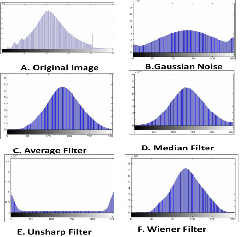
TABLE II PSNR AND MSE RESELUST FOR SALT AND PEPPER
NOISE IMAGES WITH FILTERS
TABLE I
PSNR AND MSE RESELUST FOR GAUSSIAN NOISE IMAGES WITH
FILTERS
IJSER © 2013 http://www.ijser.org
International Journal of Scientific & Engineering Research, Volume 4, Issue ŗŖǰȱ Ȭ2013
ISSN 2229-5518
1514
GRAPH II has shown the denoising results With Salt and
Pepper Noise among various Filters.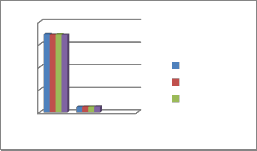
GRAPH II: THE VARITAION AMONG FILTERS FOR DENOISING RS IMGES
20
15
[1] Sara Parrolli, “A Non Local SAR image denosing algorithm on LLMMSE Wavelet Shrinakge”, IEEE Transactions On Geoscience And Remote Sensing, vol. 50, No. 2, February 2012.
[2] Florian Luisier, IEEE Member, “Image Denoising in Mixed
PoissonGaussian Noise”, IEEE Transactions On Image Processing, Vol.
20, No. 3, March 2011.
[3] Fuan Tsai, Walter W. Chen, “Striping Noise Detection and
Correction of Remote Sensing Images”, IEEE, vol. 46, No.12, Dec
2008.
[4] Raymond H. Chan, Chung-Wa Ho, and Mila Nikolova, “Salt-and-
10
5
0
1 2 3
Average S_1
Medain S_2
UnSharp S_3
Pepper Noise Removal by Median-Type Noise Detectors and Detail- Preserving Regularization”, IEEE transactions on image processing, vol. 14, no. 10, October 2005.
[5] Zhang Xiangjun, Yang Jianjun, “Stripe Noise Characteristic Analysis and Removal Algorithmsfor “Hangtian Tsinghua-1”, Satellite Images”, IEEE, 2001.
[6] D. Z. hang and Wang, “Impulse noise detection and removal using fuzzy techniques”, Electronic Latter, Vol.33 No5, Feb 1997.
HISTOGRAM II: RS IMAGES OF SALT AND PEPPER NOISE AND
FILTER RESULT
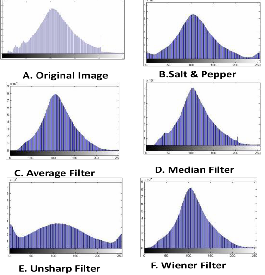
In this paper, we have studied only impulsive noises means Gaussian and Salt & Pepper applied four filters on noise affected remote sensing images which have denoised successfully and quality has measured using quality controls. Throughout this experimentation we observed that the results of Gaussian and Salt and Pepper Noises are quite satisfactory. The future scope of this work will be sought to handle different noises in the RS image at minimum time. Another sore point is lack of objective quality measure for Remote sensing images which weaken maximum experimental analysis. Therefore, the effectiveness of all technique for pre- processing increases as the random noise decreases.
We are very thankful to M1 STIC Info provide original image at their website for our experimentation. http://youssefhaiti.free. concordorthophoto.png
[7] Bin Wang, “Automated Detection & removal clouds and their
shadows form Landsat TM image” , IETCE, vol. E82, Feb 1999.
[8] G. Chien N. Lin and Chung J. Kuo, “Channel Noise Recovery Of
Images Through Anti-Gray Coding Technique”, IEEE, 1996.
[9] Mr. Salem Saleh Al-amri, Dr. N.V. Kalyankar, “A Comparative Study of Removal Noise from Remote Sensing Image”, IJCSI, International Journal of The research paper published by IJSER journal is about Analysis of effect of noise removal filters on noisy remote sensing images Issues, Vol. 7, Issue. 1, No. 1, Jan 2010.
[10] Jaun C., Jimenez-Munoz, Jose A. Sabrino, “Surface emissivity retrival from airborne hyper spectral Scanner data; insights on atmospheric correction and noise removal”, IEEE Geoscience And Remote Sensing Letters, vol. 9, NO. 2, March 2012.
[11] Ramesh Manza, “Wavelet and Multiwavelets based Synthetic Aperture Radar (SAR) Image compression” VNSGU Journal of Science and Technology, vol.2 Issue:1 , June 2010.
[12] Gurmeet Kaur, Rupinder Kaur, “Image De-Noising using Wavelet
Transform and Various Filters”, IJORCS, vol.2 Issue 2, pp. 15-21,
2012.
[13] V. Shaaradadevi, S. Sunanda, “Two stage Impulse Noise removal technique For SAR images based on ANFIS and Fuzzy Decision”
,European Journal of Scientific Research, vol.68 No.4, pp. 506-522, 2012.
[14] Dr B.C. Panda, Remote Sensing -principle and application, First Edition, Viva book Pvt Ltd, 2005.
[15] George Joseph, Fundamental of Remote Sensing, Second Edition, University Press (India) Pvt Ltd, 2005.
[16] Hasan S. M. Al-Khaffaf, Abdullah Zawawi Talib, Rosalina Abdul, “Salt and Pepper Noise Removal from Document Images”, Spinger, Visual Informatics: Bridging Research and Practice Lecture Notes in The research paper published by IJSER journal is about Analysis of effect of noise removal filters on noisy remote sensing images Volume 5857, pp 607-618, 2009.
[17] Y. Wang, w. Chen, “MTV: Modified total Variation model for mage
noise removal”, Electronic Letter, vol.47 No.10, 12 May 2011.
[18] Sonali R. Mahakale & Nileshsingh V. Thakur, “A Comparative Study Of Image Filtering On Various Noisy Pixels”, International Journal of Image Processing and Vision Sciences: 2278 – 1110, vol-1, Issue-2, 2012.
[19] Giancario B. O., Silva, “Issues in geographic data quality assessment by remote sensing techniques”, 2012.
[20] Image, “Index of / M1STIC info/s2/Traitement”.
[21] http://youssefhaiti.free.fr/M1%20STIC%20Info/S2/Traitement%20d'i mages/Roudet/TP/Images/faible_contraste/concordorthophoto.png
IJSER © 2013 http://www.ijser.org